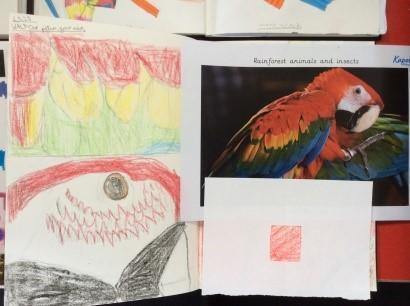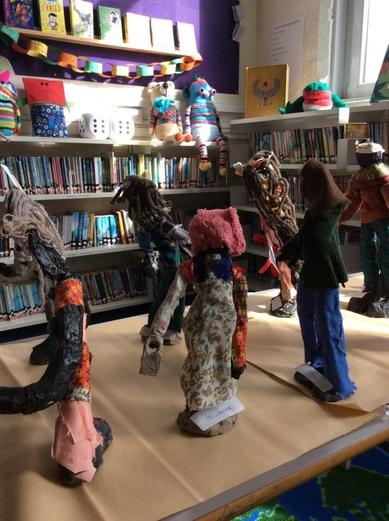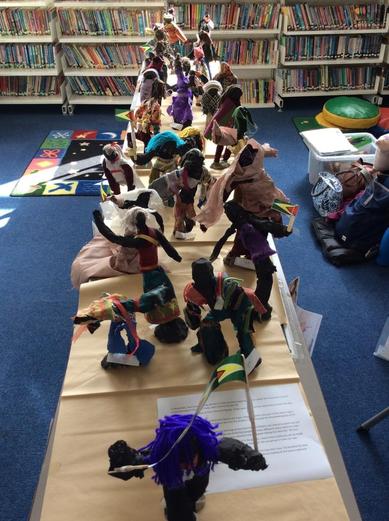Art and Design
Theological Underpinning
We all have God-given talents – our expression of these is necessarily different. Christians should appreciate and accept others, respecting creativity and achievement without overlooking flaws. It feels natural to celebrate God and his world through artistic expression, yet this is problematic in the Bible. Those who worship false idols, or who presume to know the likeness of God find their works torn down. More often than not, the doubts around ‘art’ in the Bible are due to the associations with shows of wealth and status. The true artist does not seek to curry favour or approval, but finds a path to personal expression which is singular and individual, much like faith. Art and Design can show a deep appreciation for the world around us, including the built environment. Art can also transcend spoken and written language to highlight injustices and call people to take action.
NC Programme of Study Aims
The national curriculum for art and design aims to ensure that all pupils:
- produce creative work, exploring their ideas and recording their experiences
- become proficient in drawing, painting, sculpture and other art, craft and design techniques
- evaluate and analyse creative works using the language of art, craft and design
- know about great artists, craft makers and designers, and understand the historical and cultural development of their art forms.
Curriculum
In Our aim at All Saints’ is to develop and encourage the children’s natural creativity so that they can become confident and enthusiastic artists. Through our teaching of art, which happens not only in the school but in our local environment and during our trips to art galleries, we hope to develop each pupil’s knowledge, understanding and enjoyment of art and design. We aim to give the children a wide exposure to a great variety of artists, designers and craftsmen as well as the opportunity to use different art techniques, from a diverse range of cultures both past and present.
To support the delivery of our curriculum we primarily use the Kapow Primary Art and Design scheme which should enable our children to reach the end of Key Stage attainment targets in line with the National Curriculum. We chose Kapow Primary as it is a partner of Artsmark which further supports our ongoing Artsmark journey.
The Kapow Art scheme of work is designed with five strands that run throughout. These are:
- Making skills
- Formal elements (line, shape, tone, texture, pattern, colour)
- Knowledge of artists
- Evaluating
Through our Art and design scheme of work, these strands are revisited in every unit. In our Art and design skills and our Formal elements of art units, pupils have the opportunity to learn and practise skills discretely. The knowledge and skills from these units are then applied throughout the other units in the scheme.
Key skills are revisited again and again with increasing complexity in a spiral curriculum model. This allows pupils to revise and build on their previous learning.
Lessons are always practical in nature and encourage experimental and exploratory learning.
Our curriculum is designed in such a way that children are involved in the evaluation, dialogue and decision making about the quality of their outcomes and the improvements they need to make. By taking part in regular discussions and decision-making processes, children will not only know facts and key information about art, but they will be able to talk confidently about their own learning journey, have higher metacognitive skills and have a growing understanding of how to improve.
The expected impact of following the Kapow Primary Art and design scheme of work is that children will:
- Produce creative work, exploring and recording their ideas and experiences.
- Be proficient in drawing, painting, sculpture and other art, craft and design techniques.
- Evaluate and analyse creative works using subject-specific language.
- Know about great artists and the historical and cultural development of their art.
- Meet the end of key stage expectations outlined in the National curriculum for Art and design.
Every child has a hard-backed sketch book which they add to during their time at All Saints’ from Reception to Year 6 which documents the progression of their drawing skills as well as recording and capturing experiences and ideas.
Nursery have been learning to mix two colours to make a new colour.
Look at these wonderful Chinese Dragons made from handprints.
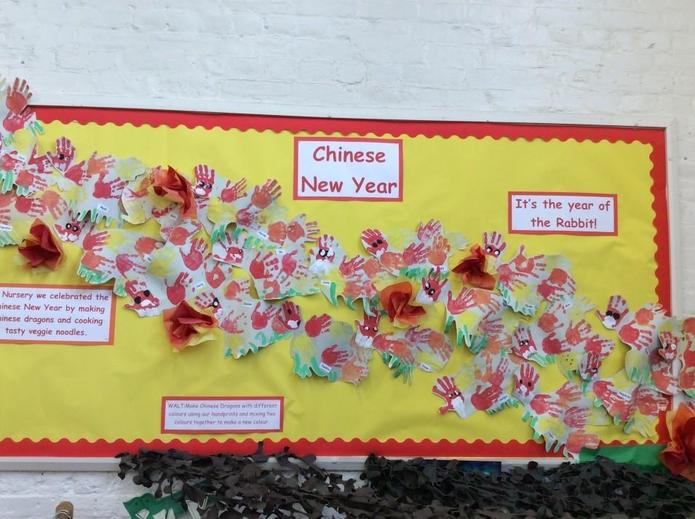
Y3 have carefully selected and curated fabrics, colours, textures and images inspired by our topic ‘Life in the Freezer’ to create a mood board.
“We experimented with colour mixing to create a colour palette to express many tones and shades we associate with these cold environments.”
“We researched the different wildlife and wanted to capture a range of emotions by selecting images carefully.”
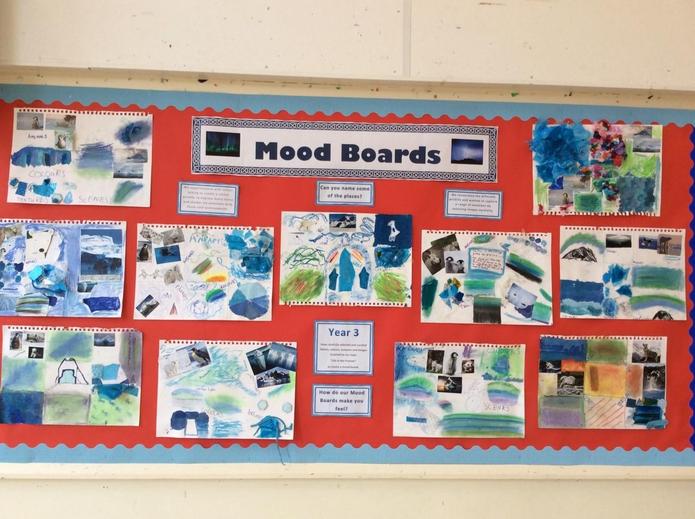
Immersing in the sights and sounds of the rainforest, Y4 children are inspired to create a series of drawings, forming their ideas into a mood board.
“I like using different textures and fabrics because it was exciting to have a different feel, the leopard paper gave a realistic touch!“
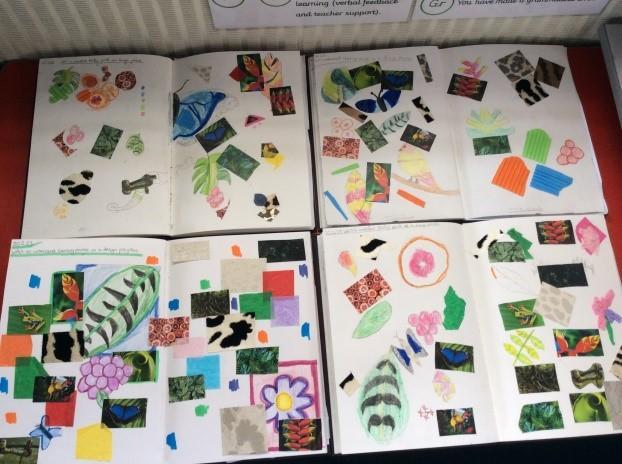
They go on to explore how drawing can develop ideas for pattern design; they have drawn one rainforest animal from four different perspectives.
“I like how I used different shadings and I rubbed them together to make it more realistic I did a lizard, I found the eye challenging because there was so much detail!”
“I enjoyed spending lots of time on all the detail and I liked how we got to use lots of equipment to make it look realistic like the crayons!”
|
|
|
|
In November Year 6 went to Tate Britain, to visit the Hew Locke installation called The Procession, as part of our learning on the Slave Trade, with cross- curricular Art.
The children made sketches of their favourite figure. These were some of their observations from the day:
"The Tate was built using money from the Tate & Lyle sugar company, which was part of the slave trade. I was impressed by the effort that had been put into display; I most enjoyed the breathtakingess of it!" By Albert
“I most enjoyed the shock we had when we first arrived in the gallery. I learnt that sculpture can be made out of any material and old scraps. Fabrics are one of the best materials. We are going to make our own statues so this has prepared us.” By Karim
|
|
|

